This week we had the launch of the 4th Gen Intel Xeon Scalable Sapphire Rapids processors, codenamed “Sapphire Rapids”. This is a completely new platform with features like a DDR5, PCIe Gen5, CXL, EDSFF, and more. With the new socket we have new HPE ProLiant Gen11 servers with Sapphire Rapids.
HPE ProLiant Gen11 Servers with 4th Gen Intel Xeon Scalable Launched
HPE announced for new ProLiant Gen11 servers in this generation, including one new model.
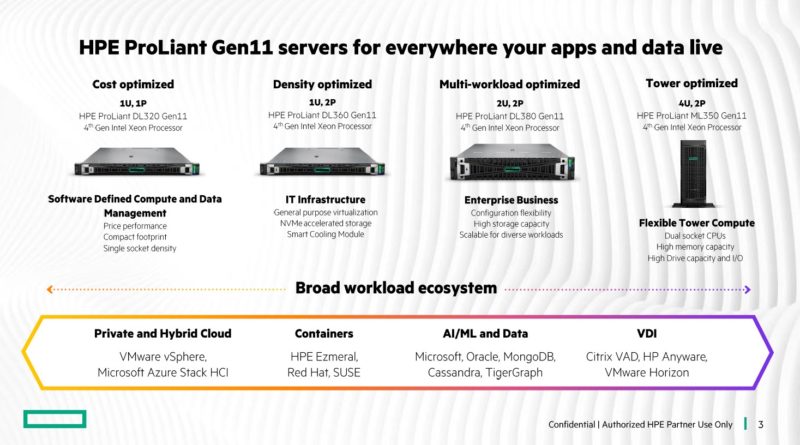
The new model is the HPE ProLiant DL320 Gen11. We see this as a more cost-optimized platform. One of the big challenges with the newest generation of servers is that routing PCIe Gen5 along with DDR5 means that motherboards need to use higher-quality materials. As a result, systems become more complex.
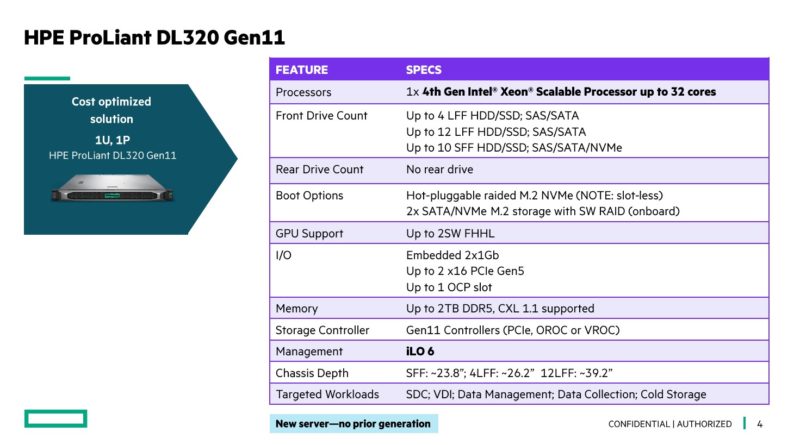
This is a single-socket processor that utilizes only the lower-power, and core count MCC die chips. To learn more about XCC versus MCC 4th Gen Xeon parts, see our in-depth launch coverage XCC and MCC Sapphire Rapids packages.
Inside the server, we can see a shorter layout to minimize PCIe routing as well as the single socket design. HPE is still utilizing a full 16x DDR5 DIMMs in this platform, which is a nice touch.
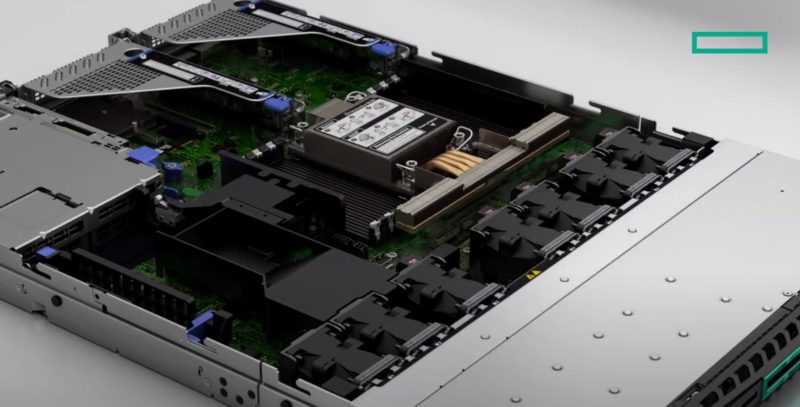
HPE also is updating the DL360 Gen11. We previously used the DL360 as a 1P 2nd Gen Intel Xeon Scalable test platform. HPE adds several features, including some we saw in the Ice Lake (3rd Gen Xeon Scalable) generation, including the addition of OCP NIC 3.0 slots for networking instead of proprietary form factors.
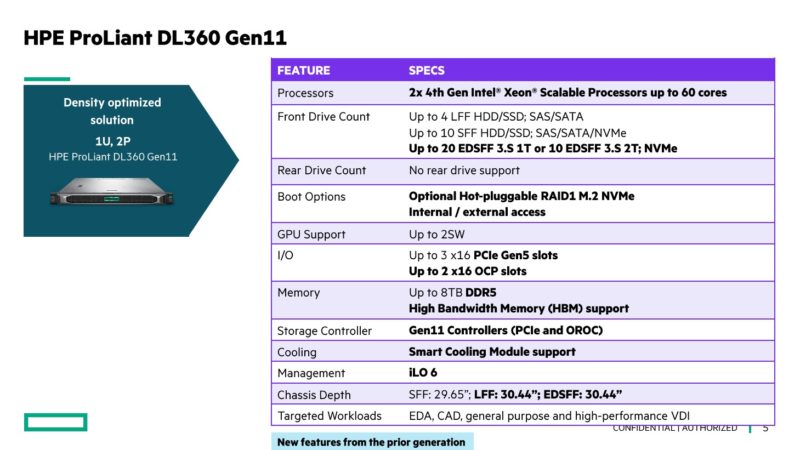
Likewise, the 2U version of the platform, the HPE ProLiant DL380 Gen11 is also out. Both the DL360 and DL380 Gen11 support up to 60 cores, which means 350W TDP CPUs like the Xeon Platinum 8490H.
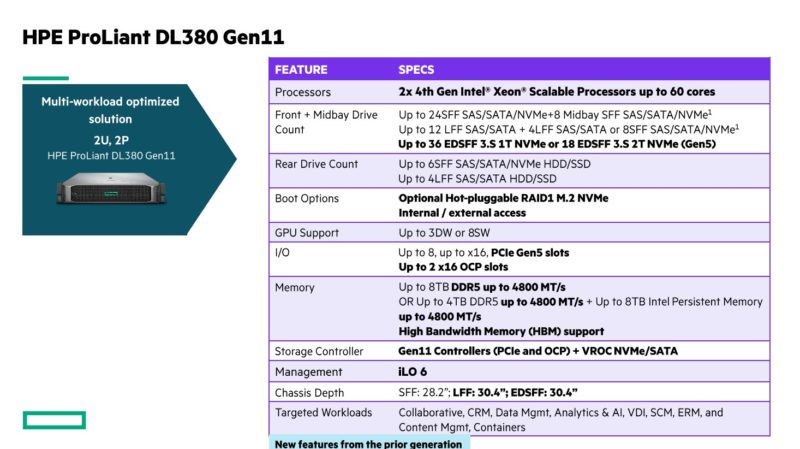
The ProLiant DL380 Gen11 and the DL360 Gen11 both support the new Intel Max series of processors with 64GB of HBM2e onboard. Not all servers will in this generation due to the power and cooling requirements of these parts. We think this could be a really interesting option for many of HPE’s customers, especially using the HBM2e in caching mode.
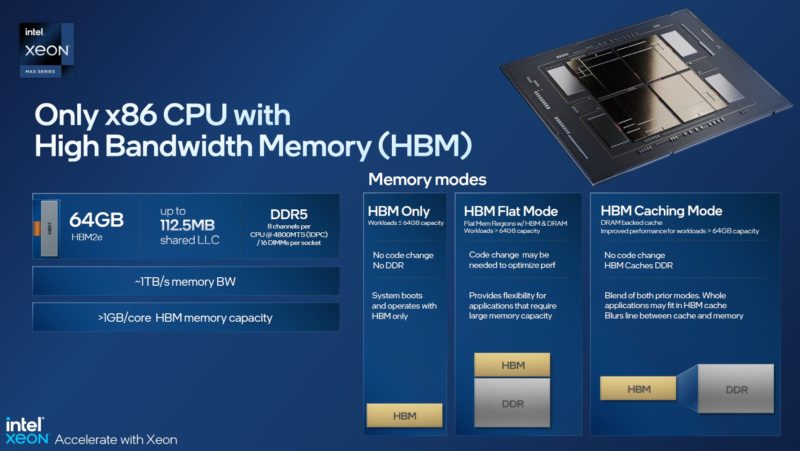
HPE also has a new tower server. Many of HPE’s tower and SMB servers were never updated for Ice Lake Xeons due to the cost of the new chips and PCIe Gen4. It is important for HPE to give customers in different segments the ability to take advantage of the newest processors.
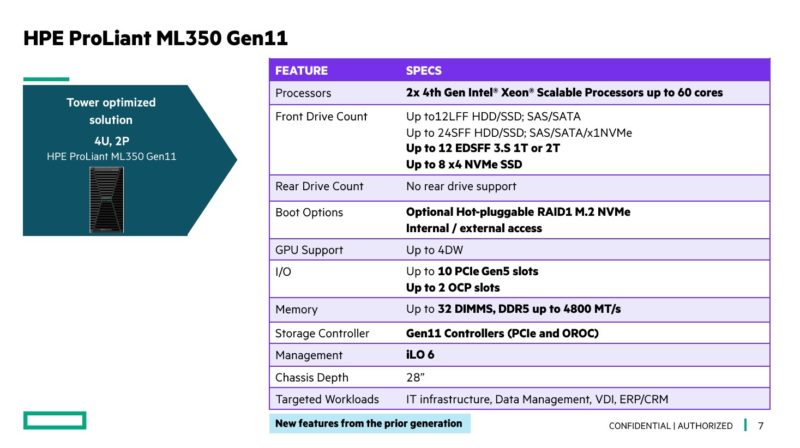
We reviewed the HPE ProLiant ML350 Gen10 in the previous generation.
Final Words
HPE is one of the world’s largest server vendors, so we would expect it out at launch with Intel’s newest Xeon servers. The Gen11 lineup is a lot different than what we saw in older generations since the majority of server platforms are for non-Intel architectures. Those include AMD EPYC 9004 “Genoa” and Ampre Altra platforms.
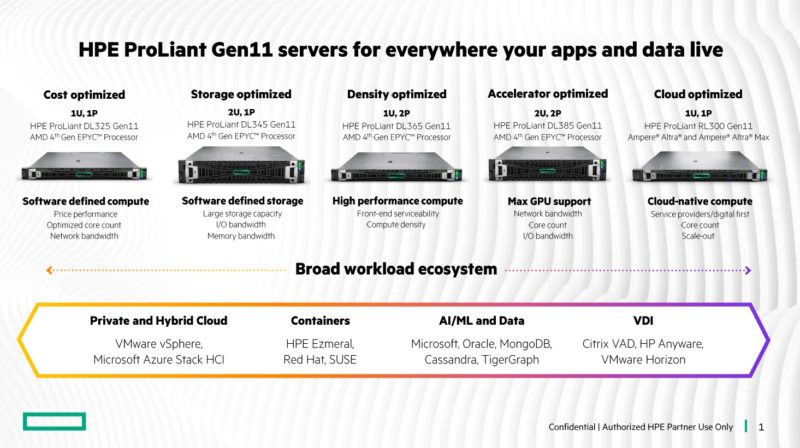
In any event, the new platforms are very exciting. If you want a quick overview of the new Sapphire Rapids platform features, STH did an overview outside of Intel’s headquarters with a rapid-fire version of what to expect from new 4th Gen Intel Xeon Scalable servers.

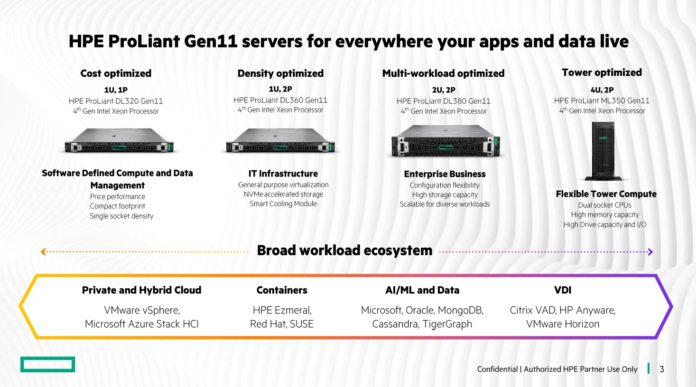



Minor, *extremely* pedantic correction:
The DL320 is not a new model per se, they last had it in generation 5
Hi, was there a word about a new HP Micro Server Gen11 at the event? Greetings, Tim
Hi Tim – Usually, the MicroServer line runs on a Xeon E class CPU and launches well after a new generation of those. SPR is too high of power consumption for a MicroServer like that.